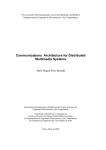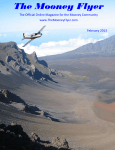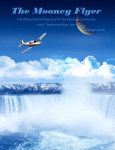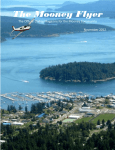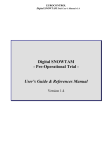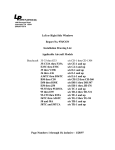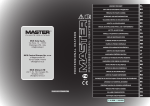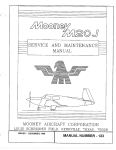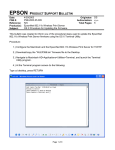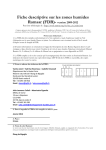Download Present Position - The Mooney Flyer
Transcript
The Mooney Flyer The Official Online Magazine for the Mooney Community www.TheMooneyFlyer.com March 2014 The Mooney Flyer Volume 3 Number 3 March 2014 Contents Features Another Engine Longetivity Trick Editors Phil Corman Jim Price Phil Corman reviews how to improve your engine longevity and introduces a new trick that may also increase its lifetime. Perfect Mooney Landings… Every Time Jim Price covers an oft overlooked sight picture for perfect landings… Contributing Writers Bob Kromer Tom Rouch Paul Loewen Geoff Lee Linda Corman Michael Riter Cliff Biggs Mooney Tales From The Right Seat This month, Linda Corman covers a Mooney Flycation to Old Sacramento in California. The Mooney Summit Mike Elliott organized a Mooney Summit with Ron Dubin in Panama City Beach, FL. Read his summary of this amazing event. If he does it again, you can’t miss it! Fuel Tank Leaks Aargh.. the bane of Mooney Owners… but Mike Riter of LASAR goes into it in detail. Monopoly in WW II An interesting story of intrigue and creativity from WWII, recently declassified in 2007 To Subscribe Click Here The Mooney Caravan: A Brotherhood of Pilots The Mooney Caravan and associated Formation Clinics are fun, make you a more precise pilot, and complete with new camaraderie. To Advertise Click Here In Every Issue To Submit an Article Click Here From the Editor Appraise Your Mooney’s Value Website of the Month – My Airport. Classifieds, events at your airport Mooney Mail – Feedback from Flyer readers Ask the Top Gun – Tom Rouch answers your questions Upcoming Fly-Ins Internet Clippings – Interesting Stuff we find on the net Have You Heard the News? – Relevant GA news & links for the month Product Review – KT-74 ADSB Transponder Click Here to Subscribe Click Here For Back Issues If you would like to donate to keep The Mooney Flyer healthy, please send your donation via your PayPal account to [email protected] 2 Back to Table of Contents The Mooney Flyer Volume 3 Number 3 March 2014 The results from last month’s survey were interesting, but not too surprising. The question was “What are the main causes of the Declining Pilot Population?” Book of the Month This month, we’d like to hear from you on how you chiefly/mainly use your Mooney? In a world of glass panels, iPads in the cockpit, increasing FAA theories on making better pilots, this book stands apart. Published in 1944, this book goes back to the fundamentals of “stick & rudder” flying that is as valuable today as it was back in 1944. CLICK HERE to buy it from Amazon 3 Back to Table of Contents If Black Boxes survive airplane crashes, why don’t they make the entire airplane out of the same material? The Mooney Flyer Volume 3 Number 3 March 2014 VFR Flight Following Trick Many of us use Flight Following, especially through congested airspace or cross- countries. It’s nice to be talking to ATC in the event that something happens, because you are already talking and ATC knows your current location. When you call ATC for Flight Following, they know nothing about you at the outset. Conversely, if you file a flight plan with FSS, only FSS knows your flight plan; ATC does not. Here’s a trick to get your flight plan into both FSS & ATC. It’s pretty simple. When you file your flight plan, check the IFR box. I know you’re thinking “But I’m flying VFR”. Stay with me. Then in the “altitude” box, select “VFR/<altitude>” where altitude is your VFR altitude in hundreds of feet. For instance, “ VFR/95” for a cruise altitude of 9500. Finally, place “VFR Flight Plan” in the remarks section and file your flight plan. When you call ATC for flight following, add, “My flight plan is in your departure file”. ATC will have it in their system and know everything they need to know without you repeating any of it. New FAA Regulation? Part 0, Section 000 (a) 1(c) Section I: No pilot or pilots, or person or persons acting on the direction or suggestion or supervision of a pilot or pilots may try, or attempt to try or make, or make attempt to try to comprehend or understand any or all, in whole or in part of the herein mentioned. Aviation Regulations, except as authorized by the Administrator or an agent appointed by, or inspected by, the Administrator. Section II: If a pilot, or group of associate pilots becomes aware of, or realizes, or detects, or discovers, or finds that he or she, or they, are or have been beginning to understand the Aviation Regulations, they must immediately, within three (3) days notify, in writing, the Administrator. Section III: Upon receipt of the above-mentioned notice of impending comprehension, the Administrator shall immediately rewrite the Aviation Regulations in such a manner as to eliminate any further comprehension hazards. Section IV: The Administrator may, at his or her discretion, require the offending pilot or pilots to attend remedial instruction in Aviation Regulations until such time that the pilot is too confused to be capable of understanding anything. 4 Back to Table of Contents The Mooney Flyer Volume 3 Number 3 March 2014 Appraise Your Mooney’s Value Don’t forget about our cool new Appraise your Mooney’s Value using Jimmy Garrision’s valuation. Jimmy is from All American Aircraft, the country’s largest Mooney reseller. We have implemented the models for M20C, M20E, M20G, M20F & M20J. Click on your model to simply complete the valuation. You no longer need paper and pencil. Just another benefit to our subscribers. These forms are currently Beta test quality. Please send errors to us. M20C M20E M20G M20F M20J My Airport http://myairport.com/ The information in this website is pilot maintained, similar to AirNav. But its focus is more on local knowledge of each airport, upcoming local events, free classified ads and forums. As with other websites, the value is increased if pilots update it with the latest information. Give it a try. 5 Back to Table of Contents SERVICE CEILING - Altitude above which the cabin crew cannot serve drinks The Mooney Flyer Volume 3 Number 3 March 2014 Great publication – thanks for this! On Free Play in the Empennage: The February issue has two articles that deal with tail play. Michael Riter says 5/16” (.313”) play up/down is acceptable. Tom Rouch says it needs to be within .08” to .01”. These are quite different - .01” is almost no movement at all. Which should we follow? Tom N Editor Note: Thanks for the catch… Mr. Rouch meant .1”. We have corrected that in the online issue. On The Decling Pilot Population: My take is that it is not for everyone. Fear based on ignorance permeates the mindset of the general public when it comes to aviation, and general aviation (GA) in particular. To make things worse, it's viewed as elitist! Off with their heads, I say! Unfortunately, the elitist view is correct. Only a very small percentage of the public has the desire, mental ability, physical qualities, perseverance, and money, to meet the rigorous demands of achieving a pilot's license. If we look at forms of recreation, flying and scuba diving are the only two pastimes that require more than just money. It's no coincidence that they're the only two that are completely unforgiving of mistakes (stupid or otherwise). We wonder why we're always under attack, on security, environmental, and financial fronts. None of these attacks are based on fact, but are instead based on public misperception. The mainstream media fuels this misperception, because demographics sell advertising. The ultralight and light sport segments in Canada and the U.S. respectively, will introduce a few more people to our pastime. However, this will not reduce the pressure on GA. Our only chance is to educate, not only the public, but the lawmakers. The airlines should be our ally, as the next generation of jet pilots has to come from somewhere. The European model of strangling GA, and training pilots from zero hours to right seat for the airlines, has left hundreds of planes without pilots, and has reduced the ranks of EU private pilots to the very wealthy. This has cost the EU billions in lost productivity. Of the qualities I listed as needed to become a pilot, only two can be affected. The flame of desire can be fanned, and the financial burden can be reduced. Mental and physical ability are inherent, and perseverance can only be inculcated as a trait by early teaching. The desire to become a pilot was in the heart of every child from 1903 until the 1970's. It represented adventure, respect, a little danger, and travel. Deregulation of the airlines gave the public cheap holiday travel, and led to the idea of the pilot as a bus driver. Today's children don't want to become pilots, they want to become CEOs, or stockbrokers. At least they'll have enough money to fly. If slick mainstream ads can sell cheap junk to the tune of billions of 6 Back to Table of Contents The Mooney Flyer Volume 3 Number 3 March 2014 dollars annually to the public, why are we still advertising only in media directed at us? We are already pilots. Quit preaching to the choir. We need an ad blitz in the mainstream media that works. Once we've increased the desire, we need to welcome these new acolytes with flight training that meets their needs. Why are 40 year old $10,000 trainers with tattered interiors, ugly paint, and antique avionics renting for $100 an hour, when $50,000 new cars can be rented for $50 a day? The whole training paradigm needs an overhaul. At most flight schools, the neophyte is treated as a cash cow, rather than the flight school's "raison d'etre". Flight schools must stop milking each student for hours. There's no reason a license can't be achieved in 45 hours. Some will say, "there's so much more to learn today, with glass cockpits, and convoluted airspace". Horsepuckey! Glass is supposed to make it easier. If it hasn't, we've all been led down the garden path by the avionics manufacturers. Speaking of...planned obsolescence seems to be prevalent in all aspects of our lives, and never more so than in outrageously overpriced avionics we're forced to buy. There's another barrier to building a thriving aviation community. I'm very glad to be a pilot, and aircraft owner. I couldn't run my business without my plane, and my plane defines my lifestyle. Nothing makes me happier than sharing my outlook with non-pilots, and nothing makes me angrier than the current state of affairs in GA. Chris S On Starting Our Engines: I’d like to add to your “Engine Starting” article. I have an IO-360 in a 201 – and for years I struggled with Hot Starts. The technique in the POH does not work at all, and other 201 pilots agree with me. I tried all manner of variants, including your suggested “throttle at 1,000 RPM” technique. Nothing worked. Then a few years ago, one of Paul’s mechanics at Lake Aero (Danny – can’t remember his last name – but no longer there), showed me the Hot Start technique that ALWAYS works: - Do NOT use any boost pump Throttle – Wide Open Mixture – Idle cutoff Once the engine catches, QUICKLY move mixture to rich AND throttle to a little above idle o Getting the throttle off of Wide Open obviously needs to be done ASAP Using this method, it takes about 3 to 5 prop blades to swing by the windshield before the engine starts, and she’ll run a little rough for a minute or so. But she’ll always start, and no more running the battery down or overheating the starter! Danny, if you’re reading this, Thank You! Tim H On The Decline of GA Pilots: The survey was posted this month on what the primary reason less people are learning to fly and getting their PPL. I think costs are a factor to be sure, but the biggest reason is cultural. Young people today don't think of aviation the same way as in the past. During the years after ww2, aviation was the top of the most amazing list. Plus, you had thousands of army and navy pilots that still wanted to fly. I truly believe that kids today would just rather get instant gratification from the stupid computer than go out and do something that takes time and commitment. There needs to be a way to get aviation into the minds of our youth as a real thing that can be theirs for life. John L 7 Back to Table of Contents The Mooney Flyer Volume 3 Number 3 March 2014 The Mooney Summit The start of something GREAT It all started after some Mooney specific training. The Mooney pilot, Ron Durbin, had completed some training in his Bravo with Mooney specific instructor, Mike Elliott, and they were chatting … wouldn’t it be great to get some Mooney pilots together in Panama City Beach, FL, during the winter for some training and social time. We could sow some seeds that could improve our “Mooney breed.” Ron offered his condos for free for a weekend. Mike said he would put together a program and could find some Mooney instructors that would help out. After making some calls and sending emails, this germ of an idea started to gain some strength. All the Mooney instructors accepted to help out, gratis. Some companies started making donations to help the cause. First came some smaller giveaway donations, then some serious donations to host the first evening gathering; then also the second evening. Mike developed an invitation to Mooney pilots. After getting everyone’s approval, he sent it out on MooneySpace.com, the MAPA list and aviating.com in addition to listing it on www.mooneyevents.com. Within the first week, all the free condos had been spoken for, 35 attendees had registered, and Mike had to start saying “no” to some late requests simply because the seminar space was physically limited. What a response! Mike finalized the program, including a DPE, Max Gurgew, giving IPCs and an IPC presentation (that was absolutely fantastic). He also enlisted Bruce Jaeger, former owner of Willmar Air Service and unquestionably a Mooney expert. His presentation was also superb, so much so, he returned for an additional two hours in the afternoon. Those of us who were flying were sad to miss the second round of expert advice. He’ll be given more time next year. And the great presentations continued! An outstanding movie from NASA on icing was presented by Mike. Engine management was covered by Roger Gradle, Service Manager for Continental Motors 8 Back to Table of Contents The Mooney Flyer Volume 3 Number 3 March 2014 Group. Paul Beck, owner of Weep no More, LLC, talked about our Mooney tanks and I was roped into giving my presentation on my three world flights (Mooneys are great distance flying machines). Ron Jarmon presented an iPad in the cockpit seminar and bought in an expert in ADS-B for the group to learn from. The Deputy Mayor of Panama City Beach kicked off the event by giving Mike and Ron the keys to the city. The weather was perfect for the Mooney pilots flying in from Minnesota, North Carolina and other states in the Northeast and Midwest. Over 55 people attended the delicious social gathering the first evening with the catering made possible by Premier Aircraft Sales and Weep No More, LLC. Those who had made donations to support this first attempt at a Mooney Summit were entered into a drawing for the donated prizes. Each was happy to go away with a nice gift from some very generous companies who recognized the potential of this event and made gift donations. Although Saturday morning weather was a little rainy, as forecast, we were inside covering the morning presentations. By flight time, the sun was out and the weather was perfect, except for no crosswind practice. Panama City’s new 10,000 foot runway was plenty long enough for stop and goes and the tower cooperation was terrific. By evening we had 8 attendees receiving Wings credits for their BFR’s or IPC’s. As this was a social/flying gathering, not everyone chose to fly. But the presentations were always fully attended. The Saturday evening dinner/social sponsored by Continental Motors Group was also a success with lots of Mooney pilots swapping stories and meeting new Mooney pilots. Spouses enjoyed the social time and the sun. After the Sunday morning presentations, everyone said goodbye and flew home. What a success. Planning has already started for next year’s Mooney Summit. It will be bigger and better. Stay tuned! Behind the Scenes at the Mooney Summit It all happened after a restless night in Panama City Beach, FL. Let me explain. Earlier in the week, I received a call from a gentleman I had met at a Mooney gathering he hosted for the Glacier Girl in Middlesboro, Ky in March of 2002. We later reconnected in Muncie, Indiana while working with an Instrument student from Indianapolis. Ron Dubin asked me to meet him in Panama City as he felt he really needed to have someone spend some time with him to reinforce good flying habits and polish procedures. I wish I would have known what this was going to get me into! That Saturday was spent going over his patterns as a pilot and flying his, relatively new to him, FIKI Bravo. It was quickly apparent to me that there was nothing at all wrong with his airmanship or safety procedures, so we spent the rest 9 Back to Table of Contents The Mooney Flyer Volume 3 Number 3 March 2014 of that day working on polishing up what he already knew how to do. I suppose when you also have a 201 and a Rocket and fly every day, you do stay current. The next morning, I went up to the Penthouse unit that Ron was staying at so we could begin the next day’s training and IPC work. Ron showed me around what was to become the site for our Summit Reception. I remarked “what an outstanding view!” and Ron replied “You know, if you ever want to organize a fly in, I'll be happy to let Mooney pilots stay overnight in my condos during the off-season. I have no personal agenda, and would be happy to do it” Those words stuck with me on my flight back to Tarpon Springs, FL., especially the “no personal agenda”. When I returned to my home, I immediately decided to have a “better the breed” event with “no personal agenda” that is also a social event. I called Ron, and with his approval, began to design the program. Contacting Subject Matter experts like Bruce Jaeger, CarolAnn Garratt, Max Gurgew, Paul Beck, Don Maxwell, et. al., resulted in an overwhelming response of “I’m in” and “this will be great”. The Summit was born. Alice & JoAnn really did most of the work to make this Summit happen! Within a couple of days, I had the invitation and proposed agenda sent out and registration filled up almost immediately. Physically, we could only hold so many for our seminars and we began to take names for the waiting list. The real hero of this event was the embracement of the concept of “no hidden agenda” by everyone. The Spirit of the Summit award goes to JoAnn Dubin, Ron’s wife. She spent the entire month of January in Panama City Beach refurbishing their condos so that we would have very nice accommodations. Free food, free lodging, free education, free BFR’s and IPC’s, Mooneys, great Mooney owners, and world class Subject matter experts. The Summit couldn’t miss, and it didn’t. We appreciate their amazing efforts and Thank them! Mike Elliott & Alice Barbera 10 Back to Table of Contents Ron & JoAnn Dubin The Mooney Flyer Volume 3 Number 3 March 2014 Perfect Mooney Landings – Every Time! Utilizing the Runway Expansion Effect by Jim Price There is an anomaly that some call the “Runway Expansion Effect”. While on approach, as you near the runway, its trapezoidal shape naturally grows in the windscreen. Its growth expands geometrically, but the last eight to ten seconds before touchdown, it defies its previous geometric growth. For instance, here is how the runway looks when you’re 18 seconds, 16 seconds, and then 12 seconds before touchdown. It looks quite normal in its growth. Then, referring to the graphic below: At 10 seconds, it really starts to “expand”, and at 8 seconds the runway is downright massive. That’s quite a picture change in just just four seconds. Conveniently, when the runway begins to expand, defying geometric logic at about 10 seconds, that’s also when you should begin your flair. By the time 8 seconds rolls around, you should be in the flare. The assumptions to make this work: 1) You’re a precise Mooney pilot and 2) You have stabilized your approach at your aircraft’s stall speed (VSO) + 30%. The formula is sometimes referred to as 1.3 x VSO. For Instance . . . The M20K POH specifies 75 knots for a landing approach speed with flaps full. Using the VSO + 30% formula, the M20K, at max gross weight of 2,900 pounds, has a VSO of 59 knots. 1.3 x 59 gives us 77 knots – very close to the POH specified approach speed. The M20C specifies 80 MPH on final. Its VSO is 57 MPH. 1.3 x 57 = 74 MPH; just 6 knots slower than the POH 80 MPH. 11 Back to Table of Contents The Mooney Flyer Volume 3 Number 3 March 2014 What about Landing at Lighter Weights? In the military and in the airlines, burning a ½ ton of fuel has a big effect on approach speeds. That’s not the case in Mooneyland. Let’s use the M20K as an example. After a three hour flight, the K will have burned 45 gallons or 270 pounds. Instead of a gross weight of 2,900 pounds, the M20K now weighs 2,630 pounds and the VSO has decreased a whole two knots, from 59 to 57 knots. 1.3 x 57 = an approach speed of 74 knots. That’s only three knots slower than max gross weight approach speed of 77 knots. If you can read three knots and nail it, we at TMF are very proud of you. The M20C POH doesn’t specify a VSO for lighter weights. However, after a three hour flight, you will have only burned off 30 gallons or 180 pounds. An 80 MPH approach speed should still work very well. The Flare The moment you notice the “Runway Expansion Effect”, you should pull your power to idle, if it’s not already at idle, and raise your nose level with the runway. As you begin to settle, raise the nose further and put the top of the cowling on the distant horizon. Continue with back pressure on the elevator to keep the top of the cowling on the distant horizon. Here are a few pictures to give you an idea of what the runway will look like as it “expands”: 10 seconds and starting the flare Bringing the Power to Idle I have learned that in calm winds, reducing the power to idle works well when I feel that I’m 50 yards from the threshold. In stronger winds, 10 to 20 yards prior is a better idle point. Maintain your aim point, just beyond the landing threshold, and begin your flare when at the 10 second point; when the runway begins to expand. If you are having a difficult time making consistently great landings, try it. 12 Back to Table of Contents The Mooney Flyer Volume 3 Number 3 March 2014 Another Longer Life Engine Trick Higher MP & Lower RPM There are many things that a Mooney owner/pilot can do to lengthen the time before a major overhaul or factory reman. Perhaps the most important thing is “To fly your Mooney regularly”. Nothing hurts your engine more than the oxidation that occurs inside your engine when it is idle. The moisture causes rust and the oil turns acidic over time; both bad. The second most important thing you can probably do for your engine’s life is to change the oil and oil filter at no longer than 50 hours or 3 elapsed months. (Your POH may vary). Remind yourself that changing just the oil is a little silly since changing the filter costs only $20 dollars and takes but a few more minutes. So change both at each interval. The next thing you can do for engine longevity includes the following: 1) Keep your CHTs below 380oF for Lycoming and below 400oF for Continentals. 2) Whether you run ROP or LOP, stay out of the RED BOX, where ICPs (Internal Cylinder Pressures) are highest. 3) Cut your oil filter and look for metal. 4) Perform regular oil analysis (We like Blackstone Labs). 13 Back to Table of Contents SPOILERS - 1. FAA Inspectors. 2. Box lunches The Mooney Flyer Volume 3 Number 3 March 2014 This article focuses on yet another step a Mooney pilot can take to increase the life of their engine. This will raise as much controversy as the LOP vs. ROP threads that you see on the web and during hangar/ramp debates. The recommendation is to run your engine “over-square” or higher MP than RPM. For years and years, it was thought that your engine would shake itself apart if you ever ran oversquare. Nothing could be further from the truth. Remember, we are only saying to run your engine over-square at cruise, not other times, such as climb out. The automobile analogy is that you climb a hill in high throttle and low gear (high RPM). On the highway, overdrive is better which equates to higher MP and lower RPM. We are not suggesting automobile engines are aircraft engines; just the analogy. How much over-square? Well, if your POH gives your guidance, then follow it. Most POHs do not. In a turbo-charged engine, running 8-12 inches over-square works; non-turbocharged, 1-4 inches over-square. Again, check your POH. The basic premise is that you can select a %BHP, say 65%, at different MP/Prop Settings. The higher the MP, the lower the Prop RPM. All achieve your desired cruise %BHP. Here are the advantages of picking the higher MP, Lower RPM settings. The higher the RPM, the more horsepower is lost to reciprocating and rotating friction Propellers operate more efficiently at lower RPMs. Lower RPMs produce lower EGTs which permits more aggressive leaning without the threat of burning valves A low RPM operation provides numerous benefits: better cylinder compression, lower frictional losses, improved propeller efficiency, cooler-running valves, lower EGTs and TITs, and a quieter cabin. Confused? Rocket vs Missile? Mooney Rocket is a conversion to a 305HP turbocharged TSIO-520. It will cruise around 225kts. A Mooney Missile is a conversion to a normally aspirated IO-550 and will cruise around 185kts. 14 Back to Table of Contents The Mooney Flyer Volume 3 Number 3 March 2014 Old Sacramento by Linda Corman I want to say to the people that might have missed my “Tales from the Right Seat” I am back. Late in the summer I fell and broke my wrist and had to let it heal before I could type again. I’m better now and can again use my wrist. The month of January is usually a slow one for travel, but because we were bored and had talked about going to Sacramento we decided at the last minute to go. I want to say it is really worth the trip. Of course it is only a one hour flight for us so we can go any time and because it is January we got a great deal on the hotel. We flew into Sacramento Executive (SAC) and then took the city bus to Old Town Sacramento. This is one of the best ways to get to Old Town as the bus takes less than a half an hour from the airport and only costs $1.25 each person. We got off the bus in front of Old Town and walked to our hotel which is located along the Sacramento River. It is, in fact, an old paddle boat that is permanently tied up at the Old Town pier. It’s very cute and the rooms are stateroom size. It has the feel of a Bed and Breakfast. The name of the hotel is The Delta King and it’s a restored Riverboat, with a bar and grill and a full restaurant on board. As part of our hotel package our breakfast was included. After our arrival we tried to check in but they had not cleaned our room yet. The desk guy was so nice. He let us leave our bags with him so we could walk around the town and do some shopping. Old Town is the perfect location if you like walking everywhere. There are numerous restaurants and cafes in town and along the riverfront area. There is also an easy-to-get-to shopping mall across the freeway. They built a sidewalk that goes under the freeway and it’s an easy walk. We shopped, of course, for a while, then decided to have a cocktail before dinner. A few steps from the Delta King, along the river’s edge, is a restaurant and bar called Rio City Café. We enjoyed an Irish coffee and left to check in at the hotel. We picked up our bags from the front desk and went to our room. The room was very nice and bigger than I had thought it might be. We were on the top deck and each room opens to the outside of the boat with a small table and two chairs for each cabin. It was time for dinner so we walked a few steps toward the bridge and found one of our favorite restaurants, Joe’s Crab Shack. I 15 Back to Table of Contents There are some people who, if they don’t already know, you can’t tell them. The Mooney Flyer Volume 3 Number 3 March 2014 would fly to Sacramento just to enjoy Joe’s for an afternoon. We ordered our usual, the Crab Pot with a Margarita to wash it down. The crab pot comes with two kinds of crab legs, shrimp, sausages, corn, potatoes, all steamed together with Old Bay seasoning. This is a great feast for two people. We went back to the boat and had a couple of drinks outside on the deck with the river flowing by. The stateroom that night was a nice surprise as it was very quiet with only the sound of far off trains. The next morning we had decided to walk to the Capitol Rotunda. The Delta King is located less than a mile away from the Capitol and it’s another good reason to stay there. The last time I was at the Capitol was over 40 years ago on a class field trip. Seeing it was really almost a new experience for me and Phil had never been there before. Of course our usual luck was with us and the Governor was giving his State of the State speech in the Assembly room so it was off limits to the general public that day. We still got to look at the Senate Chambers and offices that are on display. The Capitol itself is also a museum with guided or self-guided tours. I highly recommend the self-guided tour as the building is very impressive and worth the visit. We walked back to the hotel and decided our short holiday was over and we took the city bus back to the airport. Again the best way to get around Sacramento is by bus mainly for the price and the ease of travel. Our flight back to Paso was beautiful, as winter flying out here is always smooth and clear. We probably would not have driven to Sacramento, but flying our Mooney is always a good excuse to go somewhere. How to Get There Where to Stay By far, the most convenient and GA-friendly airport is Sacramento Executive (KSAC). It’s a Class D airport with 3 intersecting runways. You can use Sacramento Jet Center or simply park in the transient area. We’ve never seen the airport congested. There is an air museum at McClellan airport (KMCC). If you are a Class C kind of pilot, then Sacramento International (KSMF) is NW of the city. But KSAC is a short 6 miles to Old Sacramento. The Delta King hotel is an old paddleboat permanently moored in Old Sacramento. We stayed in a cabin with a river view. The rooms had the feel of a B&B. There is a full bar and full restaurant onboard, and Old Sacramento is just a step outside. Don’t want to rent a car, then grab the #62 bus just outside of the airport which drops you in Old Sacramento. What to Do You can easily spend a day walking around Old Sacramento. There are dozens of shops, restaurants, ice cream shops, candy shops and bars. For Museums, check out California State Railroad Museum California Military Museum 16 California State Capitol is the Back tocapitol Table and of Contents working a museum. The Crocker Art Museum Where to Eat Joe’s Crab Shack is located on the Sacramento River, in the heart of Old Sacramento. Fresh seafood and crab steampots are to die for. Our favorite is the Classic Steampot with Dungeoness and Snow crab along with sausages, shrimp, and more. Rio City Café located on the Sacramento River has great food and a generous Happy Hour overlooking the river. Our favorite is their Jambalaya. The Mooney Flyer Volume 3 Number 3 March 2014 March 8: Fort Pierce (FRP) April 12: Flagler (XFL) April 5: A Vintage Mooney Group Fly-In, hosted by Mert Bean in beautiful Laughlin, NV (the Las Vegas on the Colorado River). Fly-in for the weekend or just drop in on Saturday morning for some ramp camraderie followed by a BBQ hosted by Landmark Aviation. Go to http://www.vintagemooneygroup.com/VMGWest/index.htm to register for this free fly-in. All Mooneys are welcome. March 21-23: Wings & Wine Formation Clinic at Paso Robles (KPRB). Pilots, BRING YOUR SPOUSE! While the guys are out flying the ladies will enjoy the day touring local wineries, tasting rooms, and the shops of Paso Robles! Hosts: Dave Marten (Mooney Caravan) [email protected] (605) 3908044 and Stephen Blythe (B2Osh) [email protected] . Fee of $75 to cover costs. March 28-30: 3rd Annual Mooney Caravan Formation Clinic (KNYL). Contact [email protected] or call Chuck Crinnian: 480-390-9080. Clinic Fee $50. Hotel: Radisson Yuma 928-783-8000, ask for Million Air rate April 10-13: MAPA Homecoming to Kerrville, TX (KERV) For more info, CLICK HERE. 17 Back to Table of Contents The Mooney Flyer Volume 3 Number 3 March 2014 Internet Clippings Mooney’s Bent or Twisted Wing from Dave Marten The correct term is 'wing twist' and/or 'washout'. This refers to wings designed so that the outboard sections have a lower angle of incidence and thus, in all flight conditions, a lower AOA than the inboard sections. While a slight reduction in induced drag can be achieved, Mooney Aircraft's main purpose for doing this on the '67 F and G models was to improve the stall characteristics of the wing so that flow separation begins near the wing roots and moves out towards the wing tips. With twist, Mooney attempted to refine the aircraft's stall characteristics. They tried to get the wing sections near the wing root to reach the stalling AOA first, thus improving aileron control as the stall progresses from inboard to outboard. Normally, the twist is usually achieved by rotating the trailing edge, thereby providing a gradual decrease in AOA from root to tip. However, it appears that in ‘67, Money twisted the outboard section of the whole airfoil. Washout reduces the total lift capability a little, but this disadvantage is normally offset by a reduction in induced drag and improved stall. The venerable 172 has about 3 degrees of washout. This is most easily seen by viewing the trailing edge from behind and noting the change between the flap trailing edge and the aileron trailing edge. The Bonanza also has 3 degrees of washout. Incidentally, the standard Mooney wing has about 1.5 degrees of washout between root to tip. In ’67, Mooney tried to twist her further, perhaps taking a cue from the other manufacturers. However, but it wasn't quite done as elegantly, because in my humble opinion, the ‘67 looks like a an 800lb gorilla grabbed the wing tip and twisted :o) Since the twist only occurred in the ’67 model year, we can conclude that it didn't make a significant difference and it was back to normal in '68; yet to be revised. Even with the twisted wing, stall strips were still required. I think some of the early ‘68 F/Gs still had the twist, until Mooney could sell off the 'twisted' airplanes. Who knows, maybe it was good for a knot or two in cruise, but it wasn't good enough to remain in production. As far as the Mooney wing goes, it’s a NACA 6-series laminar flow wing. The P-51 was the first fighter to incorporate a laminar flow wing. Mooney was the first GA single to adapt the technology. This basically moves the thickest part of the section aft to approximate a 40% chord. I could go on, but I don't have time today. 18 Back to Table of Contents The Mooney Flyer Volume 3 Number 3 GUMPS Check Mitchell Gossman Gear Checklist G: Gear down U: Undercarriage down! M: Make certain gear is down!! P: Put the GD gear down!!! S: What does this stand for, anyone? 19 Back to Table of Contents March 2014 The Mooney Flyer Volume 3 Number 3 March 2014 Send your questions for Tom to [email protected] Question: What should a Mooney Owner check and lubricate between annuals? Answer: This is an important and easy answer. There is an 100 hour AD on many models requiring lube of the landing gear and flight controls, AD73-2101 which is mandatory. Not a bad idea on later models but not required. The one thing I highly recommend is to buy a spray can of TRI-FLO. Use it on rod ends that are found throughout the aircraft, but especially on those rod ends that you can access from outside the plane; those rod ends that connect to the flight controls. I would do this about every three months. It’s very inexpensive. We change many dozens of rod ends during Annuals each year. They are hard to get and costly. This is the minimum but if you want to go further, then get a copy of the lube page from your service manual and use it as a guide. One last thing!!!! WD40 is a big NO-NO. Question: I have a 1986 M20K. When I bought it five years ago, its previous owner told me that it had a faulty left tank panel fuel gauge. When I flew it home from Minnesota, it behaved as advertised, and has not changed since: Starting out with a full or partial tank, it shows what looks like a ‘full’ or partial fuel tank level. After takeoff, the gauge begins to “wander” anywhere from its initial indication all the way down to near the bottom of the red zone. The movement back and forth is very slow and steady, with no quick jumps or drops. At the low levels, the fuel light on the annunciator panel lights up faithfully. It’s probably always drifting this way, but I notice it every few minutes except when the red light light is noticed. The right fuel gauge has always functioned correctly, I have come to trust the panel totalizer and my own math for fuel consumption, but this is of course not optimal and it doesn’t even satisfy the requirement that it only has to show when “empty”. Do you have any suggestions as to how I might work this condition up as to its cause? Thank you very much for your consideration of this matter. Answer: Let me address problems in the Wing and panel gauges. The wing gauge is purely mechanical. The actual gauge is operated by magnetism from the float, under the panel. The gauge itself is in a "cup", glued in the wing with RTV, easily changed and not very expensive. The float is mechanical, has a small magnet that turns the needle, and I have never known one to fail. The electrical gauge symptoms indicate a poor ground somewhere in the system. There are two senders, so I would start there, and work my way back to the gauge, cleaning the grounds. By the way, the panel totalizer has nothing to do with the quantity system, and the right and left indicators are independent. There is only one wire from the inboard sender back to the indicator as the grounds 20 Back to Table of Contents STEEP BANKS - Banks that charge pilots more than 10% interest. The Mooney Flyer Volume 3 Number 3 March 2014 are at the senders. There is a small chance that somewhere behind the instrument panel, the fuel gauge wire is running close to a power wire and is receiving induced voltage causing the problem. I have experienced situations where a power wire causes a problem like this and we would install a "choke" to reduce the induction. This is usually at the power wire direct from the alternator after the filter. I would check this by simply turning the alternator off in cruise for awhile to see if the oscillation stops. It could be the gauge itself, but I doubt it. You could actually swap the input wires at the gauges for a test to eliminate the gauge as the problem. Before all the above, I would sit down and carefully read the airframe log to see if there has been any work involving the fuel senders which would tell me where the problem began. 21 Back to Table of Contents The Mooney Flyer Volume 3 Number 3 March 2014 Monopoly in WWII Starting in 1941, an increasing number of British Airmen found themselves as the involuntary guests of the Third Reich, and the Crown was casting about for ways and means to facilitate their escape. Now obviously, one of the most helpful aids to that end is a useful and accurate map, one showing not only where stuff is, but also showing the locations of 'safe houses' where a POW on-the-lam could go for food and shelter. Paper maps had some real drawbacks -- they make a lot of noise when you open and fold them, they wear out rapidly, and if they get wet, they turn into mush. Someone in MI-5 (similar to America's OSS) got the idea of printing escape maps on silk. It's durable, can be scrunched-up into tiny wads and unfolded as many times as needed, and makes no noise whatsoever. At that time, there was only one manufacturer in Great Britain that had perfected the technology of printing on silk, and that was John Waddington, Ltd. When approached by the government, the firm was only too happy to do its bit for the war effort. By pure coincidence, Waddington was also the U.K. Licensee for the popular American board game, Monopoly. As it happened, 'games and pastimes' was a category of item qualified for insertion into 'CARE packages', dispatched by the International Red Cross to prisoners of war. Under the strictest of secrecy, in a securely guarded and inaccessible old workshop on the grounds of Waddington's, a group of sworn-to-secrecy employees began mass-producing escape maps, keyed to each region of Germany or Italy where Allied POW camps were located. When processed, these maps could be folded into such tiny dots that they would actually fit inside a Monopoly playing piece. As long as they were at it, the clever workmen at Waddington's also managed to add: 1 2 3 A playing token, containing a small magnetic compass A two-part metal file that could easily be screwed together Useful amounts of genuine high-denomination German, Italian, and French currency, hidden within the piles of Monopoly money! British and American air crews were advised, before taking off on their first mission, how to identify a 'rigged' Monopoly set -- by means of a tiny red dot, cleverly rigged to look like an ordinary printing glitch, located in the corner of the Free Parking square. Of the estimated 35,000 Allied POWS who successfully escaped, an estimated one-third was aided in their flight by the rigged Monopoly sets. Everyone who did so was sworn to secrecy indefinitely, since the British Government might want to use this highly successful ruse in still another, future war. The story wasn't declassified until 2007, when the surviving craftsmen from Waddington's, as well as the firm itself, were finally honored in a public ceremony. It's always nice when you can play that 'Get out of Jail' Free' card! I realize most of you are (probably) too young to have any personal connection to WWII (Dec. '41 to Aug. '45), but this is still interesting. 22 Back to Table of Contents The Mooney Flyer Volume 3 Number 3 March 2014 Fuel Tank Leaks by Michael Riter (Service Manager at LASAR) A lot of us have a problem with fuel tank leaks. A thorough inspection of the fuel tank integrity is more involved than just looking at the bottom of the wing. Yes, that is where the most obvious signs of leakage occur, but we need to look more closely. I like to open all access panels surrounding the fuel tank. CLASSIFY FUEL LEAKS Before we go much further, let’s classify fuel leaks. First, there is the Stain which is a slow leak that evaporates as soon as it is exposed to air, leaving a dry blue stain. Then we have the Seep, which is a leak that will reappear shortly after being wiped. It leaves a thick, tacky blue stain. Then there is the Heavy Seep, which will reappear right after the area is wiped, leaving a very heavy dark blue stain that is wet. Then we get to the show stopper, a Running Leak, which flows freely. Now that we have access we can get a good look at the areas around the fuel tank. Fuel leakage into the wing area is not acceptable. There are wires running through the wing to power your strobe lights, nav lights, speed brakes, etc. One spark from any chaffed wire could turn into a bad situation very quickly. I don’t lose any sleep over a dry stain, but when we get into a leak that can lead to a buildup of fumes in the wing, that gets my attention. WHAT IS CAUSING THEM Before we talk about repairing the leaks, let’s talk about what is causing them. The number one cause is aged sealant. Cause number two is wing flex. You have been in a 737 and noticed the wing position on the ground. Look at the wing in flight and it’s 4 feet higher. The same bending, tension and twistng is going on with your wing, but it’s not as noticeable. Then, add in the constant vibration from the engine. Let’s not forget the shock from landing. Worn out and hardened shock disks can also contribute to fuel leaks because worn discs are no longer absorbing the shock of landing. That force needs to go somewhere and it’s absorbed by the airframe. FIXING THESE LEAKS Let’s talk about fixing these leaks. The most common problem is when fuel stains are found around the access cover screws. All the screws you see are in sealed nut-plates. Leakage around the screws is most often caused by a “blown out” nut-plate. This is most often caused by too long of a screw being installed and puncturing the sealed nut-plate or the sealant getting into the nut-plate and the hydraulic force of installing the screw puncturing the seal. If it’s a Stain or a Slow Seep, a good easy fix is to drain the fuel and remove the screw. Install the proper length screw with sealant around the head of the screw. The proper fix is to remove the panel, replace the bad nut-plates and reseal the back of the panel. If the access cover is leaking around the matting surface of the wing skin, this is fixed by removing the panel and all sealant from the panel and the wing’s matting surface. This is much easier said than done. The sealant does not leave easily and both surfaces must be clean before reinstalling with a new B- sealant . For leaks around rivets and along seams, I will tell you how we find and repair the leaks, but I don’t recommend doing it yourself. You would need to reference FAR part 43 Appendix A paragraph C. First, determine where the fuel is coming out. Open the bay of that compartment. We have found it 23 Back to Table of Contents The Mooney Flyer Volume 3 Number 3 March 2014 easier to look from the outside in. Using low pressure compressed air, apply air pressure where the leak is coming from on the outside. Spray Leak Detector on the inside of the tank untill you see the bubbles. This is the source of your leak. Remove about 4” of sealant from around the leak, including rivets. The area, as well as the entire tank, must be completely clean before applying new sealant. Use care when applying sealant. There is a rib that is between fuel bays with holes on the top and bottom to allow fuel to flow from one bay to another. All the holes must be clear, per AD85-24-03. Apply B-2 sealant around the seams, like you would apply caulking around your sink. Allow to cure and then add A-2 sealant (brush coat) over that and on top of the rivets. Allow to cure and apply a second coat on top of that. Keep the tank vented during the curing and be sure the sealant is properly cured before adding fuel. See the “Cure Rate” tables below. Fuel leaks in the interior of the wing and cabin area are smelly and not acceptable and need to be repaired right away. Sometimes the leak can be at the fittings or fuel sender and may need only a new gasket. Leaks at the wing removable sump drains may need a new “O” ring or replacement drain fitting. Be sure the fitting is the proper one for the Mooney tank (SA53S). Sometimes we find an improper substitute that may not drain all the water. At Lake Aero Styling and Repair we do fuel tank repairs and keep fresh supplies on hand to do the job. We are also happy to help you and your mechanic with advice and sealants so that you can fix your leaks. Cure Rates - BrushableTypeSealants CLASS A Tack Free Cure Rate (hrs) (hrs) PR1422 10 30 A-1/2 PR1422 36 72 A-2 CS3204 8 30 A-1/2 CS3204 24 72 A-2 Applic. Life (hrs) ½ 2 ½ 2 Cure Rates Filleting Compound Landon Wing CLASS B Tack Free Cure (hrs) Rate (hrs) PR1422 810 45 112 PR1422 B-2 36 72 CS3204 88 30 1/2 CS3204 24 72 CS3204 8-4 36 76 TURN & BANK INDICATOR - An instrument largely ignored by pilots. 24 Back to Table of Contents Applic. Life (hrs) ½ 2 ½ 2 4 The Mooney Flyer 25 Volume 3 Number 3 Back to Table of Contents March 2014 The Mooney Flyer Volume 3 Number 3 March 2014 March, 2014 Lightspeed Sierra ANR Headset now FlightLlink – Capable When used with the Lightspeed Zulu.2 and Sierra headsets, FlightLink is now available. FlightLink is the free, proprietary app ® ® developed by Lightspeed for the iPad and iPhone that adds enhanced functionality to Lightspeed headsets. With newer Sierra or Zulu.2 headsets, FlightLink works seamlessly to capture and retrieve incoming and outgoing communications. Never miss a transmission in flight. Get instant replay of ATC calls. When combined with Zulu PFX, FlightLink's enhanced capabilities also allow users to set a variety of personal audio and operational preferences. For more information, CLICK HERE Garmin Pilot App adds 3D Synthetic Vision “With the addition of synthetic vision, Garmin Pilot takes a big step forward by offering pilots greater situational awareness in all weather conditions, day or night,” said Carl Wolf, Garmin’s vice president of aviation sales and marketing. “When combined with the GDL 39 3D, attitude information as well as ADS-B traffic and weather are all conveniently accessible within one application, further demonstrating our commitment to bringing safety enhancements to all pilots.” CLICK HERE for more… Mooney International negotiating Lease Contract at Kerrville Mooney is negotiating their lease at Kerrville, which was month-tomonth during the last 5 years. CLICK HERE for details…. 26 Back to Table of Contents The Mooney Flyer Volume 3 Number 3 March 2014 The Mooney Caravan: A Brotherhood of Pilots by Chuck Crinnian Little did I know that signing up for a mass arrival of Mooney aircraft into Oshkosh years ago was going to result in a continuing aviation experience of a lifetime. Simply put, pledging this fraternity of aviators and going through the first ritual of the mass arrival of Mooneys into AirVenture created a lifetime bond with pilots from not just the United States, but from around the world. This bond is regularly strengthened with gatherings to perfect the craft of formation flying. The Mooney Caravan is not just a once a year group adventure into AirVenture, it is a total package of flying skills, camaraderie, mutual support and long lasting friendships. Let me tell you our story. The concept of the Mooney Caravan began in 1998 when a post was made on an email list to recruit Mooney pilots to camp together in the North 40. This attracted 42 aircraft. All 42 arrived in Oshkosh at the same time in a string of aircraft. Safety for this “string” of aircraft was our primary concern. However, over the years, it became evident that this “gaggle” of aircraft was not a “formation” of aircraft. Safety was not enhanced. There were no incidents, but a few close calls. There had to be a better way. The Beechcraft B2OSH group had adopted formation flight practices from the get go. It was decided to have a hard look at this format and change how we did things. In 2011, the Mooney Caravan became a hybrid flight with the first half in 3 ship formation elements and the last half in the traditional gaggle of 2 lines of aircraft. The basic formation training in the lead half showed superior safety and arrival style points. Thus, in 2012 the Mooney Caravan became all formation. To achieve this goal, we needed to get participants trained in basic formation skills and keep them proficient. We needed to accomplish this mission with pilots from around the country with a wide range of aviation experience and attitudes. Chris “Toro” Shopperly, as president of the organization, went to work with his organizational skills and started things rolling. Maj. Dave “SARDOT” Marten, a USAF test pilot and Mooney driver came to our rescue. He reviewed the training manuals from the various formation flying associations and devised a complete training manual. This would cover not just the basics, but also offer the formation student a path up through advanced maneuvers. The next step was to implement formation training clinics at various locations around the country. A typical formation clinic starts with a ground school on Friday evening to cover the basics, often coupled with a demo formation flight in which the new formation pilot can ride along as a rightseat observer. Then, the next morning, get the “newbies” into the air with a safety pilot, exposing them to station keeping. Over the next day and a half, the newbie will fly several sorties and gain competence in station keeping, element (2 ship) takeoffs, and element (2 ship) landings. These are the foundations for the Caravan and all that is required for entrance into the ritual of the Mooney Caravan from Madison to Oshkosh. I should tell you, once your basic formation training is accomplished, you will be assigned a call sign. There is usually some significance behind this name. We have found in our clinic experience that most pilots end up wanting more. So, we give them more. Once a newbie has progressed and is competent in the basics, we introduce more advanced skills. The next layer introduces cross-unders, echelon turns, more advanced station keeping with lazy eights, and overhead breaks. After this intermediate stage, we then transition into 4 ship work. Through this progression of developing a formation pilot, we emphasize safety with comprehensive briefing and de27 Back to Table of Contents The Mooney Flyer Volume 3 Number 3 March 2014 briefings on each sortie. We now have a cadre of Mooney safety pilots across the country. They have become our “Formation Evangelists”. Enough about flying. Let’s get back to the “brotherhood”. Although AirVenture is about airplanes, it is really about people. The foundation of a fraternity is a common goal or experience. We all went through the trials and tribulations of learning formation skills. In each clinic, strangers meet newbies and friendships start. We all arrive in Madison one or two days early. Some of the safety pilots assist others in honing their formation skills. The evenings are spent together, sharing stories about life and flying. Throughout the year, clusters of “Caravanners” get together at impromptu gatherings throughout the year to fly together. Finally, for the week at AirVenture, we all camp together, and gather in our large Mooney tent for nightly activities. Throughout the years, I have amassed a fair number of close friends through my association with the Mooney Caravan. This is a diverse group with folks from many walks of life and experiences. Many are willing to lend a hand in either an aviation issue or answer a question in business, medical, or legal matters. I know that when I travel to some other area of the country, I can call on a brother Caravanner to ask advice or get together and talk Mooney. In fact, many of us who are based in the same region of the country, fly formation across the country to get to the Mooney Caravan assembly point in Madison. You may ask, “so why is this important”. One real life example from last year involves a flight of 6 from Norfolk NE to Madison. Three quarters of the way there, one of the aircraft developed a bad mag and was falling behind. That aircraft was escorted by one of the wingmen to the nearest field that had a mechanic. Our flight lead “SARDOT” coordinated with ATC to get priority handling. Also, he secured a mechanic to standby for the ailing aircraft. “Smash” in the sick aircraft only had to concentrate on flying the disabled aircraft while “Buzz” escorted him looking for traffic and keeping watch on fields in case of a dead-stick landing. If you fly a Mooney and want to go to AirVenture, I strongly recommend you look into the Mooney Caravan. The basic formation skills can be obtained with just a little effort. But be warned, it is addicting. Before you know it, you may find that your first “ritual” has evolved into an experience that will last a lifetime. You have become one with the brotherhood. Your commitment, flying safety, flying skills, and overall enjoyment of aviation will be intensified multifold. As your first step to pledge the brotherhood, go to www.mooneycaravan.com or www.mooneycaravan.shutterfly.com Feel free to contact any of the directors listed. Chuck Crinnian MD, EAA 1021464, holds an ATP and CFI certificates, flies a Mooney 231 and a CJ-6A, is an aviation medical examiner. E-mail him at [email protected] 28 Back to Table of Contents The Mooney Flyer Volume 3 Number 3 March 2014 Product Review: KT-74 ADS-B Compliant Transponder This box meets the 2020 requirements for ADS-B compliance, at an affordable price, and is a plug-andplay slide-in replacement for the Bendix King KT-76A/C and KT-78 transponders. This is not a Stratus-like device, which is ADS-B IN only. This is a full ADS-B OUT device when coupled with an approved GPS source. It’s fully certified and TSO’d. It has a relatively low power consumption at .22A when Idle and .45A when active. Because of this, no cooling fan is necessary. The KT-74 can be had for $2649 at Aircraft Spruce. CLICK HERE for details. This box is ADS-B OUT only, so you will be 2020 compliant, but if you want to see the FIS-B (weather) and TIS-B (traffic), you will still need to invest in an ADS-B IN device. Currently the cheapest solution is an iPad with Foreflight and Stratus. 29 Back to Table of Contents Many CFIs maintain the best glideslope to land is 3o. To establish a 3o glide slope, 5x ground speed (knots) should equal descent in 100fpm. Example: 100kts groundspeed and 500fpm = 3o glideslope The Mooney Flyer Volume 3 Number 3 March 2014 Mooney Instructors Around The Country California Chuck McGill (Master CFI) located in San Diego, CA 858-451-2742, Website: Click Here Don Kaye (Maser CFI) located in Palo Alto, CA, (408)-249-7626, Website: www.DonKaye.com Florida Mike Elliott (CFII) located in Tarpon Springs, FL, Contact 317-371-4161, Email [email protected] Quality instrument & commercial instruction, transition training, ownership assistance, plane ferrying Georgia Jim Stevens, USAF, Col, (ret), CFII. Atlanta, Ga area. 404-277-4123. Instrument, commercial, IPC, BFR, transition training. 20 year owner of 1968 M20F. South Carolina Wallace Moran – Charleston, SC, 843 822, 9725, Email [email protected] A NAFI Master CFI with extensive Mooney experience. He is also an FAA Designated Pilot Examiner and has been awarded the FAA Wright Brothers Master Pilot Award. Wallace is a retired airline pilot and Mooney owner. Texas Austin T. Walden, Lubbock & Abilene, Texas 432-788-0216, Email [email protected] PhD, Specializing in Models C thru J, www.WaldenAviation.com 30 Back to Table of Contents The Mooney Flyer 31 Volume 3 Number 3 Back to Table of Contents March 2014































